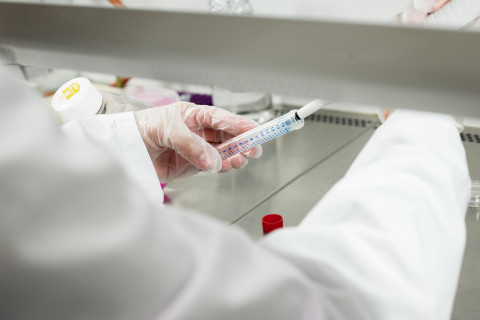New study results enlighten the dual role of serotonin in migraine pain. While triggering pain via peripheral nerve endings, serotonin has the opposite effect in the central nervous system. The researchers suggest that in migraine patients, this inhibitory control in the central nervous system may be weakened, ‘opening the gates’ for peripheral pain signals.
Serotonin is a well-known neurotransmitter and the target of multiple drugs, for the treatment of depression but also against migraine pain. The role of serotonin in migraine pathology is controversial, as both anti-nociceptive actions reducing the sensation of pain and pro-nociceptive, pain-promoting actions of serotonin have been reported in migraine. Indeed, while there is ample evidence that serotonin can induce migraine pain, the most effective anti-migraine drugs – triptans – actually activate serotonin receptors.
In a study recently published in Neuropharmacology, an international group of scientists based at the University of Eastern Finland and led by Professor Rashid Giniatullin convincingly explained the mysteries of serotonin in migraine. The team found that serotonin induces a massive activation of peripheral nerve endings, which play a key role in triggering migraine pain. Analyzing the pattern of this activation, they found that serotonin induced remarkably robust and persistent spiking activity in individual trigeminal nerve fibers. This explains not only the immediate pain-inducing but also the prolonged sensitizing effect of serotonin.
Using specific agonists and antagonists of serotonin Professor Giniatullin’s team demonstrated the key role in neuronal firing of the only known ligand-gated serotonin receptor, the 5-HT3 receptor. Apart from its direct activation of nociceptors, this receptor also activates the release of another migraine trigger, the neuropeptide CGRP, meaning that serotonin action is amplified via CGRP to initiate the long-lasting migraine events.
An important aspect of the study was the identification of the source of endogenous serotonin in meninges: granules of resident mast cells contain serotonin, the release of which may contribute to the symptoms of migraine.
Finally, the researchers also identified the reason for the previously unexplained dual effect of serotonin. In the central nervous system, serotonin blocked trigeminal nerve projections via the same 5-HT3 receptors that activate pain in the peripheral system. Thus, peripheral serotonin evokes powerful pro-nociceptive effects but it has the opposite effect in the central nervous system.
The authors propose that weakening of the central serotonergic inhibitory control in migraine can ‘open the gates’ for massive traffic of peripheral pain signals. These findings confirm the principles of the well established ‘gate control’ theory of pain published in Science in 1965. Thus, in migraine, the balance between excitatory peripheral and inhibitory central effects of serotonin could determine the appearance of headache in individual patients.
For further information, please contact:
Professor Rashid Giniatullin, University of Eastern Finland, A.I. Virtanen Institute, tel. +358 40 3553665, rashid.giniatullin (a) uef.fi
Source:
Kilinc E, Guerrero-Toro C, Zakharov A, Vitale C, Gubert-Olive M, Koroleva K, Timonina A, Luz LL, Shelukhina I, Giniatullina R, Tore F, Safronov BV, Giniatullin R. Serotonergic mechanisms of trigeminal meningeal nociception: Implications for migraine pain. Neuropharmacology. 2016 Dec 23. pii: S0028-3908(16)30589-5. doi: 10.1016/j.neuropharm.2016.12.024.
